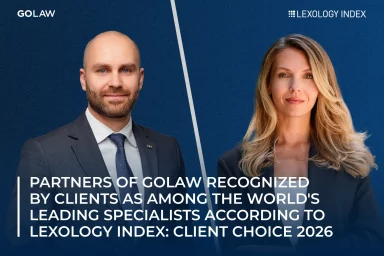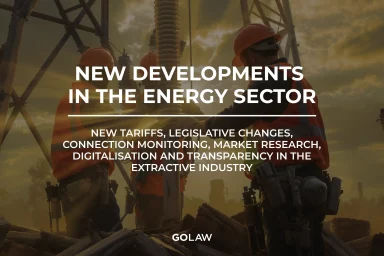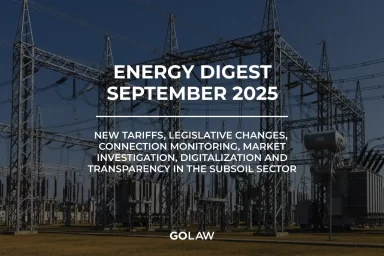CO2 emissions trading — a new way to finance energy renewal in Ukraine
Contents
Climate change is a challenge facing the entire world, and Ukraine is no exception. Restoring Ukraine to green standards is no longer a choice, but a duty. Integration of sustainable development in Ukraine in line with the European Green Deal is one of the requirements of the Association Agreement with the EU. The EU Emissions Trading System (ETS) has been operating in the EU since 2005 and by 2023 helped reduce emissions from European power and industrial plants by about 47%.
ETS – why is it important?
Before moving on to the Ukrainian realities of implementing an emissions trading system, it is worthwhile to clearly understand what it is and how it works in the EU.
The ETS works on the principle of “cap and trade”. A cap is a limit set on the total amount of greenhouse gases that can be emitted by installations and operators subject to the system. These are carbon dioxide (CO2) from electricity and heat production, energy-intensive sectors of industry, aviation, and transportation; nitrous oxide (N2O) from the production of nitric, adipic, and glyoxylic acids and glyoxal; and perfluorocarbons (PFCs) from aluminum production.
The cap is reduced annually in line with the EU’s climate goals, ensuring that emissions are reduced over time. The caps are emission permits, where one permit gives the right to emit one ton of CO2eq (carbon dioxide equivalent).
Each year, companies must provide enough allowances to fully account for their emissions, otherwise they face heavy fines. If necessary, companies can buy additional allowances. Allowances are traded on the EU’s primary or secondary carbon market.
In the primary market, permits can be obtained through auctions held on behalf of the state. On the secondary market, allowances are sold from other companies. Transactions in the primary and secondary markets precisely determine the price of CO2, which, unlike the carbon tax, is not fixed and is determined purely by the market. This means that companies can decide for themselves whether it is more profitable for them to reduce emissions, buy allowances, or sell them in case of surplus.
Since 2013, the ETS has generated more than €152 billion in revenues for the EU, which go mainly to the national budgets of member states. The revenues are used to support investments in renewable energy sources and innovative solutions. Emissions trading also provides the ETS funds for low-carbon innovation and energy transition, the Innovation Fund and the Modernization Fund.
Launched in 2005, the EU ETS operates in phases. The system is currently in its fourth trading phase (2021-2030). It took 19 years to implement the current ETS model in the EU. During this long journey, mistakes were made and better models were found to improve the system.
Even relying on the EU experience (which we cannot copy in full, as we are at different economic levels of development), Ukraine will need time to build its own effective ETS. However, of course, we do not have 19 years to implement it, our plans are much more ambitious, as we will discuss later.
The ETS alone is no longer enough
Along with the ETS, the CBAM (Carbon Border Adjustment Mechanism) should be considered. This is the world’s first mechanism for regulating carbon emissions at the border.
The idea is as follows: businesses importing goods into the EU must report on direct carbon emissions from their production and pay for these emissions. The fee should be equivalent to the fee charged to European companies under the ETS mechanism.
Thus, importers and domestic producers should be on equal terms and play by common rules. At the same time, the CBAM mechanism provides for discounts on fees for countries that have domestic carbon prices and a CO2 tax.
If a company has paid for emissions in its own country, this amount is deducted from the CBAM fee or it may be allowed to import goods without additional payment.
Until 2026, the CBAM mechanism will be in a transitional period: importers will only have to report greenhouse gas emissions from their production. After that, they will have to pay a carbon duty.
Despite the difficult times, Ukraine must continue to move towards a low-carbon economy and help businesses implement ESG principles. This is not only a contribution to the global fight against climate change, but also an opportunity to increase the competitiveness of Ukrainian businesses in international markets.
The ESG acronym includes three key aspects: environmental, social and governance, which investors, lenders and other stakeholders use to assess and measure the sustainable development and social impact of investments in a company or business.
Environmental principles include factors such as carbon emissions, waste management, energy efficiency, and natural resource conservation. A company’s compliance with ESG standards is gradually becoming a key component of business survival and development. In the future, compliance with ESG principles will not be an advantage but a necessity.
Therefore, the ETS is a whole infrastructure that should be created in Ukraine. ETS revenues can become a tool for financing ESG goals and a driving force for the development of renewable energy sources.
The cost of implementing renewable energy sources is decreasing, and the investment attractiveness is only growing. In 2023, total global investment in renewable energy and energy networks exceeded fossil fuel spending for the first time. Global investment in clean energy technologies will grow to $2 trillion in 2024.
What about the ETS in Ukraine?
The ETS system includes two stages:
- setting up a system for monitoring, reporting and verification of greenhouse gas emissions (MRV);
- creation of an emissions trading market based on the MRV system data.
Ukraine has already implemented the first stage, but only partially. In December 2019, Law No. 377-IX of December 12, 2019 “On the Principles of Monitoring, Reporting and Verification of Greenhouse Gas Emissions” was adopted. However, due to significant delays in the approval of bylaws, the MRV system was launched only at the end of 2021.
The Ministry of Environmental Protection and Natural Resources of Ukraine was designated as the responsible authority for setting up the MRV system. The first such reports from facility operators were scheduled to be received in 2022, but due to the full-scale war, their submission became voluntary. Reporting will become mandatory for facility operators only three months after the end of martial law. Accordingly, it is extremely difficult to collect data now.
The Ukrainian government’s position is quite optimistic: the national emissions trading system is expected to start operating in a pilot mode in 2025. This year, the system of monitoring, reporting and verification of greenhouse gas emissions will be fully launched. The Ministry of Environment is digitizing its last important element, which is reporting by plant operators. So, businesses have to believe, keep their finger on the pulse and, of course, prepare for innovations.
Ukraine’s progress on environmental issues was made when it was granted observer status in the Seville process last year. After full accession to the EU, Ukraine will have a “voice” in the Seville process.
Reference
The Seville Process
The Seville Process was launched by the European Commission to update environmental standards and reduce industrial emissions into the air, water and soil. As part of the Seville Process, government and business representatives are working to review the best available technologies and management practices. They have the opportunity to exchange experience and best practices in implementing EU Directive 75, learn the procedures for drafting BAT and implementing an integrated environmental permit, which has a positive impact on national policy in the field of prevention and control of industrial pollution in wartime and green post-war development.
In addition, in 2024, Ukraine should finalize the process of consolidating cooperation with Switzerland and Japan under Article 6 of the Paris Agreement on the purchase of Ukrainian excess emission allowances by these countries. This will become an additional source of green investment for the country’s reconstruction.
What to expect?
When implementing an ETS, important issues need to be recognized.
Allocation of quotas. According to Directive 2003/87/EC, emission allowances can be allocated either free of charge or through auctions. The government should be aware of the country’s economic situation and the difficult conditions for doing business in a time of war.
The use of free allowances is very important for Ukraine. Otherwise, we will not only fail to make progress, but will also “kill” medium-sized businesses and cause carbon leakage (transfer of activities to other countries).
Sale of quotas. After allocating free quotas, it is time to move on to selling quotas at auctions. In the EU, auctions are held on the basis of the European Energy Exchange (EEX). States retain the right to hold auctions separately.
In order to minimize corruption factors, Ukraine should consider holding auctions and trading on a European exchange.
Use of revenues. European practice provides freedom of decision-making on the use of emissions trading revenues, taking into account their climate focus.
Ukraine needs clear revenue regulation to rebuild the country on the basis of a “green” energy transition.
Building an effective ETS system in Ukraine is not easy, but it is important. CO2 emissions related to military operations amount to more than 150 million tons, and our industry has lost more than 30 large enterprises. The numbers are only growing every day.
Meanwhile, in the EU, emissions were reduced by 15.5% in 2023 compared to 2022, according to EU member states as of April 2, 2024. The energy sector was the most important driver of the record reduction in ETS emissions in the EU, thanks to an increase in electricity production from renewable sources instead of coal and gas.
The ETS is relatively new, but it is an attractive and huge market that can serve as our salvation. Along with the achievement of climate goals in the country, we have a great opportunity to accumulate funds for the development of green energy and accelerate the transition of business to ESG standards, following the EU’s example.
It is necessary to be very active in the environmental expert community today to prepare a high-quality legislative framework that would allow us to successfully launch the reform. Green energy and the latest technologies are the future, and they are in our hands.
This article is a translation of an original piece published on Ekonomichna Pravda. You can find the original article here.

Dr. Valentyn Gvozdiy
Managing Partner, Attorney at law, PhD
- Contacts
- 31/33 Kniaziv Ostrozkykh St, Zorianyi Business Center, Kyiv, Ukraine, 01010
- v.gvozdiy@golaw.ua
- +38 044 581 1220
- Recognitions
- Lexology Index: Corporate Tax 2025
- ITR World Tax 2025
- Lexology Index: Client Choice 2025
- The Legal 500 EMEA 2025
- 50 Leading Law Firms Ukraine 2026
Get in touch
To get a consultation, please fill out the form below or call us right away:Sign up to be aware
New achievements are inspired by information. GO further, don’t miss out GOLAW news and legal alerts
Our expertise
-
- Energy and Natural Resources
- Antitrust and Competition
- Banking and Finance
- Compliance, Corporate Governance and Risk Management
- Corporate and M&A
- Criminal and White Collar Defence
- Defense in Anti-corruption procedures and regulations
- Labor and Employment
- Natural Resources and Environment
- Government Relations (GR)
- Insolvency and Corporate Recovery
- Intellectual property
- International trade
- Legal support of business and private Сlients in Germany
- Litigation and dispute resolution
- Private clients
- Real Estate and Construction
- Restructuring, Claims and Recoveries
- Martial Law
- Tax and Customs
-
- Agribusiness
- Aviation
- Chemical industry
- Engineering, Construction and Building Materials
- Environment and Natural Resources
- Financial institutions
- IT and AI
- Industry and manufacturing
- Healthcare industries, Life sciences and Pharmaceuticals
- Media, Entertainment, Sports and Gambling
- Retail, FMCG and E-Commerce
- Transport and Logistics
We use cookies to improve performance of our website and your user experience.
Cookies policy
Cookies settings








